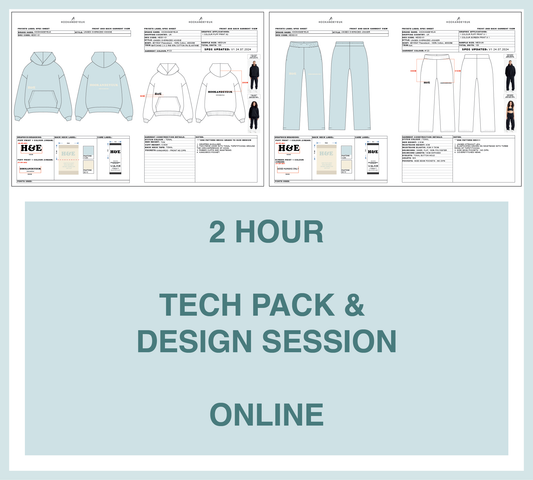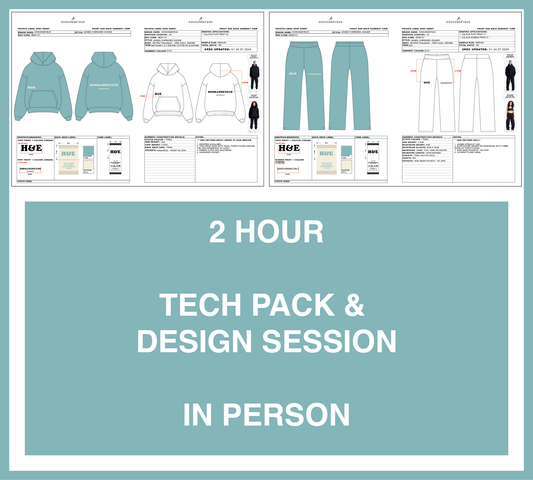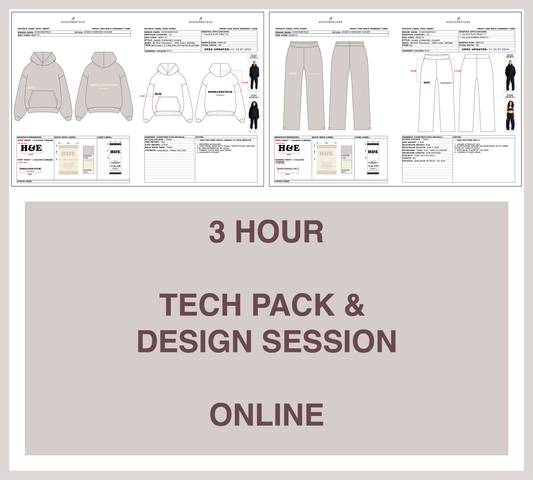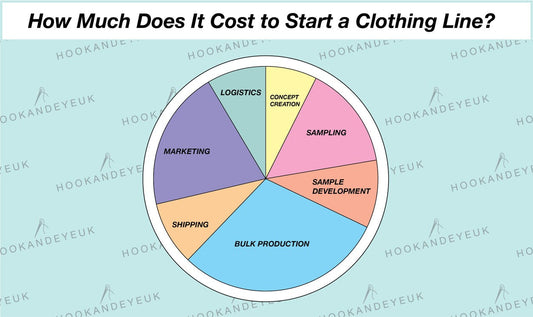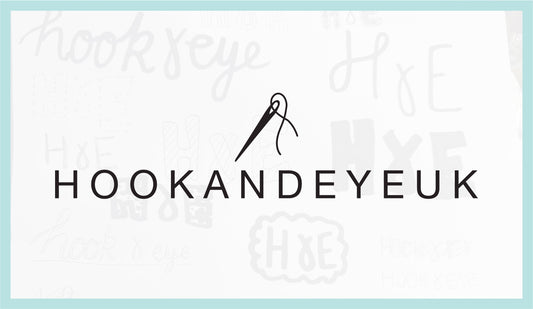This guide is going to tell you what to learn (and what not to) when starting a clothing brand.
It's so hard to know where to begin when starting a clothing brand, and the realisation of how much you need to learn can be overwhelming...but fear not, I'm here to tell you exactly where you need to get your clothing brand off to a flying start!
1. Do Your Competitive Shopping & RRP Benchmarking
Your absolute biggest lesson and the most vital knowledge you need to know is what your competitors are doing price-wise, and which brands you want to sit next to. Most new brands come in to us with the idea of being a brand that offers 'affordable luxury' - I always explain that 'affordability' really depends on an individual's means. What's 'affordable' to a multi-millionaire is going to be different to what's 'affordable' to your average earner.
The worst plan you can have as a brand owner is to start off with a lower RRP (Recommended Retail Price) and then plan to raise it as your clothing brand gets bigger. This strategy builds a totally different customer base at the lower price point, that you annoy and then lose when you raise prices. You'll then have to try to re-build a new customer base for your brand at a higher price point. Yep, that's right, that means starting your brand building all over again. So, it's much better to just start at the price point you'd like to be at.
But how do you establish what the right price point is? The first step is to do some price benchmarking of brands that sit in a similar category to you.
Here's a quick example of some price benchmarking for streetwear 'bridge brands':

From the above image you can see a selection of hoodies from various bridge brands. With pricing ranging from £115-£410, these are all classed as 'Affordable Luxury'. Generally any pricing under this is classed as Value brand pricing. Remember that the value of the item is the main thing that gives the brand value! So don't sell yourself short, and make sure you charge the right prices!
If you want more detail on pricing for your clothes, here's our really handy guide to fashion brand pricing strategy that will give you more guidance on how to get your pricing right.
2. Photography is crucial
Content is key in this world, especially for fashion brands. To get good quality photos, you're not going to be able to just buy a fancy camera and magically become a fantastic photographer overnight, but there is a way to fake it until you make it. Here's how to get great fashion photography in a few simple steps...
- Find a brand that you love the overall imagery of. Study it. Analyse their style and how their photos are composed. Then go and do as many little test shoots as you can to try and replicate that style. Use your friends and family at first so you don't waste money on models.
- Use your phone to take the shots, as long as you have bright natural lighting and a clean camera lens the shots should be fine for socials and other marketing bits.
- Be realistic - not every picture you take is going to be good enough. Expect 1 or 2 photos to be acceptable per shoot (at first). Take between 100-300 shots per shoot.
- Do not just post anything to your socials. The quality of your imagery is directly linked to the RRP's you can charge for your brand. The higher the RRP the higher your image quality needs to be.

The above image is taken on a phone. You can see that with a mixture of good natural lighting and the right shot composition, you can get some great photos for your brand.
Another tip that a lot of new brands use is to team up with new photographers, who are trying to build a portfolio. This may be photography students or new photographers to the industry. Remember the relationship always has to be mutually beneficial, if there is no monetary transaction there must be an agreement met that both parties are happy with. Offer to provide the model and the location/set in exchange for the edited photographs.
If you're going down the route of using a photographer for your shoot - here's our guide on how to get your clothing photoshoots done properly.
3. Adobe Illustrator
Almost every new fashion brand owner expresses a wish to learn Adobe Illustrator when they go into their first tech pack and design session with our designers. In our view, learning Illustrator at this stage is probably a waste of time for you.
Illustrator is an extensive program that takes years to fully master, and to be honest, it's use to you at the beginning only really lies in creating your logo. Your time is much better spent elsewhere! Don't spend time trying to learn Illustrator when there are so many other things to concentrate on when starting your clothing brand.

But if you're trying to put together a logo for your brand, READ THIS GUIDE ON HOW TO CREATE YOUR BRAND LOGO FOR FREE and it will tell you exactly how to easily preview 1000's of different fonts that you could use for your clothing brand logo.
4. Understanding Your Tech Packs
You need to make sure you know what you're agreeing to when you sign off a tech pack for sampling or for bulk production.
At Hook and Eye UK we will always talk you through every detail on your tech packs (this is what our Tech Pack and Design Sessions are for), however it's always good to have your own understanding.
Take a few minutes to read our ultimate guide to tech packs for clothing brands, and you'll come away with all the knowledge you need around tech packs.

That said, don't underestimate the importance of your designer's knowledge when it comes to a tech pack. Our designers will always explain every detail and guide you on every decision when it comes to your tech pack session, but not every clothing manufacture company is as diligent.
5. Shopify
Almost all e-commerce brands use Shopify as the host for their website.
Hook and Eye UK's website is hosted by Shopify too. It's certainly the easiest to use and produces the best results (for a hosting platform). You'll always want to ensure you use a website developer to create your website to ensure it has a good customer and user experience, however a website is a living breathing thing. You need to learn how to change sections of it and how to update images, products and blog posts. Do not leave your website stagnant as this effects your SEO (Search Engine Optimisation) results, the more your website is updated and renewed the more authority Google will give it. The higher you rank on Google, the more visitors (and hopefully customers) you'll get for your clothing brand.

To see who we recommend to build your website CLICK HERE (this company built the Hook and Eye UK website).
In Conclusion
There are so many things to learn when you're starting a clothing company. So our key takeaway is to focus on learning the essentials at first, and then broaden your horizon once you have mastered all of the points that we've mentioned above.
As a quick recap, here's what you need to learn:
1) How to price your clothing
2) How to get great photography for your brand
3) Learn that some things are a waste of time (at this stage! - e.g. illustrator)
4) Make sure you learn about Tech Packs!!!
5) Get an understanding of Shopify so that you can keep your site updated and sell your clothes online.
If you're struggling on where to start we offer brand consultation sessions, these sessions provide guidance on how to take your clothing brand forwards in the most efficient way. CLICK HERE to read more.
If you think you have most of it covered and you're ready to get started on your clothing tech packs, just click here to book a design session with us.
If you’re unsure on anything in this article don’t hesitate to ask our team at Hook and Eye UK, we’re always happy to advise.
Love, Joss H&E xx
P.s. If you'd like some guidance from us on your next clothing collection and you're new to Hook and Eye UK simply fill in our enquiry form here. The form will guide you through steps to see if we can help you and then tell you exactly how to contact us.


